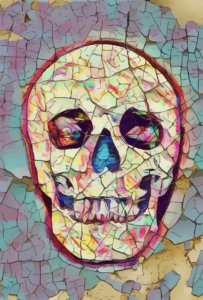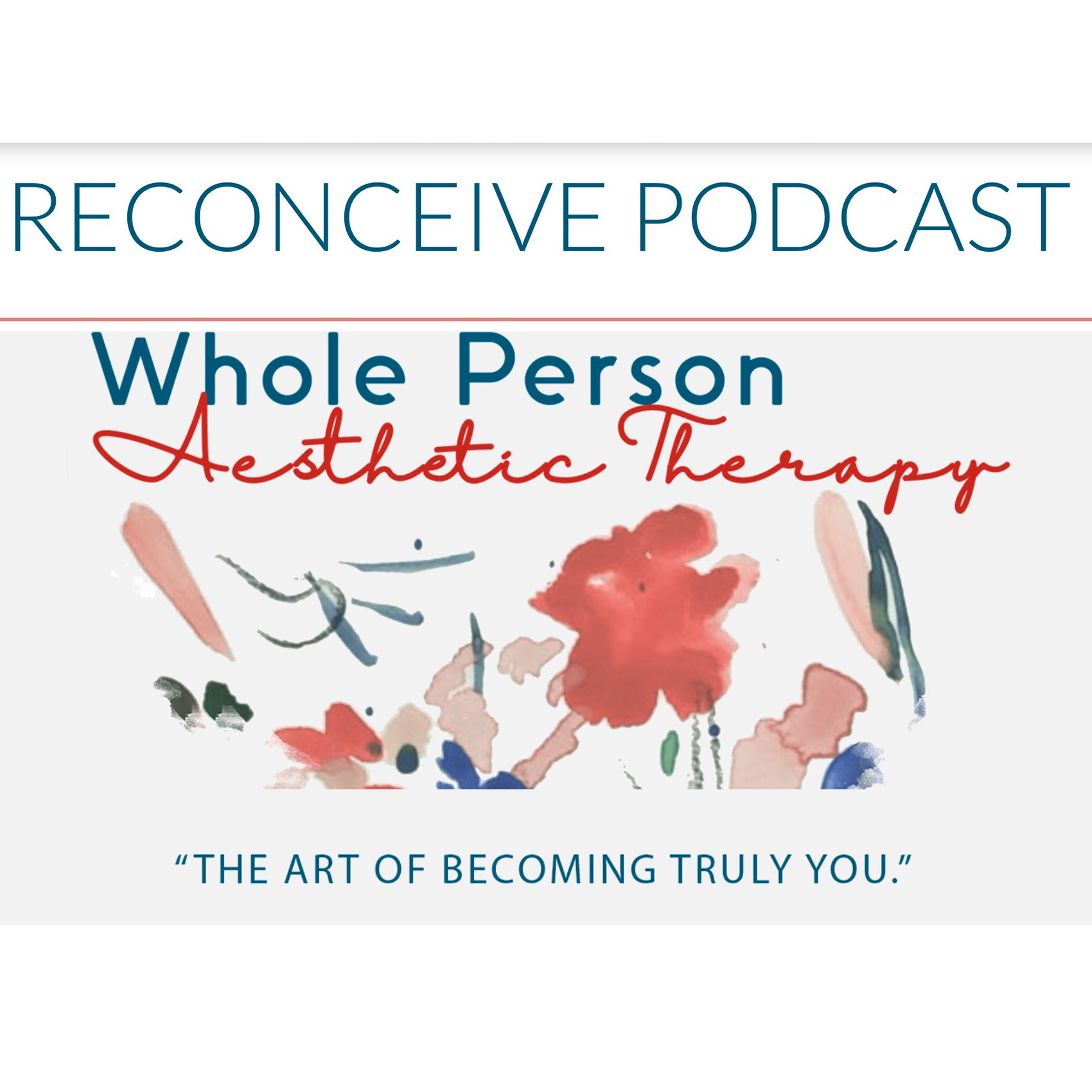Episodes
ReConceive Podcasts
Connecting With You Podcast
"Multi" is my favorite color and I (DC) love to mix ideas. People are complicated systems, so only one view of our problems leaves out many dimensions that could help speed relief. This is why I work closely with Tracy Maxfield, a neuromuscular therapist, energy worker, and dancer. Tracy and I combine concepts once thought to be separate: neuromuscular therapy and family systems, dance and attachment processes, therapeutic movement and EMDR (eye-movement desensitization and reprocessing) therapy. We learn from each other's very different approaches and our clients benefit. Blending multiple elements in therapy allows us to address a person's distress from the perspective of the body, its sensation and pain - and the less visible aspects of emotion, story, and thought.
Episodes
Self Care for Therapists: The Relational Side

Why Relational Self-Care Matters to Your Work
Do you think of your love life as a critical component of your self-care? If you’re like most of us, probably not. Let’s see . . . work out: check, sleep eight hours: check, feel close with someone I love? . . . Not so much.
But relationships form the foundation of self-care. Every kind of therapist, body worker, physician, social worker, nurse, teacher, or coach needs a certain quality of relationships in order to care for ourselves and bring our most alive self to the work we do. Whether we realize it or not, we bring our relational life into the consulting room, clinic, or wherever we work.
So how do close, connected relationships turn us into better therapists?
Feeling connected or disconnected affects our nervous system. When we feel rejected or ostracized, we often have a fight or flight response that does not encourage connection. But when we’re in mutual relationships with reciprocity and deep knowledge of each other, we thrive. And we can better help others find their own healing relationships.
Limbic Resonance in Relationships 
In A General Theory of Love, Thomas Lewis and his colleagues describe something called limbic resonance, a harmonized state of body-mind. Limbic resonance helps us form attachments: as babies with our mothers, as lovers staring into each others’ eyes, as longtime friends listening deeply to each other . . . and even between therapists and clients.
When we are in a state of limbic resonance, there’s calm: we feel accepted and safe. We’re not going to be hurt. We’re not going to be blasted, shamed, or criticized. But there’s more. An extra something activates the limbic system of the brain; it’s a deep knowing, a feeling of hope, of being able to relate and have fun, to know the other person and feel understood by them.
Everybody seeks this resonance. It’s the state of body-mind our clients are looking for in therapy (most likely without realizing it). And it’s hard to create this with our clients when we don’t have it ourselves. That is to say, we therapists (as all helpers) need to cultivate mutual, resonant connections with the people in our lives as a part of our getting ready to do good work with our clients.
Make Contact
If you feel isolated, if you feel depressed, seek comfort, seek safety, and break away from this idea that independence is the ultimate goal for us. We helpers often forget to reach out when we’re in distress. So, get some limbic resonance with someone you deeply trust.
Anytime you seek comfort or safety through connection, you’re improving your nervous system in a way that helps you resonate with others.
Listen to ReConceive Podcast here and learn more about cultivating limbic resonance in your personal life, thus bringing more calm and vitality to your therapy practice.
Reversing Helper Burnout by Coming Home to Ourselves
Health Practitioners in a Crisis of Disconnection
Helper burnout creates disconnection of all kinds. As therapists (or other healthcare professionals), this kind of fatigue isolates us from our bodies, our creativity, our sense of meaning, and our intimate relationships.
Right now, health practitioners provide frontline health care, talking daily with people contemplating suicide or who have lost a family member to COVID. Kids have grown-up-sized depression, and their parents feel hopeless and panicky. We have waiting lists if we didn’t have them before. Our client’s issues challenge us like never before.
Surveys of mental health professionals all over the country establish that we’re worried, we’re burned out, and we face new and more severe problems with our clients. We need new skills and we need more time each week to develop them . . . but our schedules are already packed. Never mind rest and recreation.
So how are we, as psychologists, counselors, physicians, body workers, and social workers, supposed to address this emotional pandemic, and how do we deal with our burnout?
Burnout is defined as a psychological syndrome in professionals working with other people in challenging situations, characterized by fatigue and emotional exhaustion – feeling overburdened and depleted. We feel depersonalized. We think . . . Who am I? I don’t know what I’m doing anymore. Why I’m doing it? We feel cynical towards people and we have a diminished sense of personal accomplishment.
Finding Reconnection through the Body
The opposite of helper burnout is connection: with others and ourselves. ReConceive podcast focuses on connecting to ourselves as helpers. We talk about coming home to yourself by coming home to your body. Tracy Maxfield and I believe that the body of the therapist matters to the effectiveness of therapy. Helper burnout calls for intensive, focused reconnection to the body.
For example, we use simple exercises to reconnect us to our bodies as we prepare to see clients in the office. Here’s one to try before you start your workday.
Sit comfortably and imagine that you are just a skeleton: no muscles, no connective tissue. Visualize yourself as a skeleton. Imagine the bones of your feet – the bones of your lower leg – the bones that form your knee joints – your femurs – the sides of your pelvis, and the back of your pelvis. Follow that up through your spine. Finally, visualize and feel your rib cage, skull, and jaw.
This exercise connects you with your body, calms the nervous system, and provides a bit of grounding to bring more of your intelligence online.
It’s so important in these chaotic times to be able to find methods to self-soothe and re-engage with our bodies. Reconnecting with our bodies enables us to move into what’s called social engagement, in polyvagal theory. And social engagement is where we heal.
Listen to ReConceive on this website or anywhere you get your podcasts.
ReConceive Therapy: Co-Therapy for Everyone’s Nervous System

Sometimes solo therapy feels pretty bleak . . .
A client tells you he has no emotion as he reveals his father’s suicide. Therapy fails to gain traction and he continues to not feel. Another client has an auto-immune disorder that started when she discovered her husband’s secret addiction to porn. Months of therapy yield only slight improvements in her mood, and the physical issues persist.
Ever feel like you have half the pieces you need to solve a puzzle? This feeling contributes to therapist burnout.
ReConceive podcast focuses on therapist (and all helper/healer) burnout and how to reverse it. We talk about what a well-supported therapist looks like and how all of us can take steps to feel better and make our work more effective and sustainable. First, all of us need a village.
Every Therapist Needs a Village.
In fact, a therapist’s own tribe makes the work possible. Without our systems of mutual support, we:
- get tired and depleted,
- we feel stuck in seemingly impossible client problems,
- we stop learning and growing,
- we go into trance (not the good kind),
- and we become automated in our approach to helping.
This is a recipe for burnout, which also means therapist depression.
Yesterday in our podcast show, ReConceive, Tracy Maxfield and I talked about putting our skill sets together for co-therapy. Working together as a team gives us:
- Greater creativity, flexibility, and freedom in session (aka, fun)
- A fuller set of possible interventions and insights; more opportunities to learn new things as we work
- An improved and shortened therapy process
- Mutual support and supervision
- Shared responsibilities and decision-making, and
- A shared emotional load
- MORE IMAGINATION
Co-Therapy: Why would anyone do this work alone?
For Tracy and I, co-therapy means one of us can focus on the body aspects of our client’s problem while the other listens for the big picture of trauma and attachment issues. Tracy knows the nervous system and its interrelationships with all other physiological systems, inside and out. I know relationship, family-of-origin, and story. Tracy tracks emotion in the body and I help a person take hold of it. Tracy uses many interrelated methods to relieve specific pain or dysfunction and I use many interrelated methods to broaden and deepen the improvement.
Most of all, we feel supported and alive with the learning possibilities that go with doing ReConceive Co-Therapy. What if every workday could feel like this?
Look for more detail to come soon: the work expands and unfolds as we dig into it. We hope that you will follow along and find your own ways to ReConceive the important work you do in our world.
Write to us with questions, stories, and problems: here on the website or at reconceivetherapy@gmail.com.
Talk soon . . .
ReConceive Therapist Burnout
Burnout (as a way of life) in Health Professionals
Burnout creeps up on us. We’ve been “on” for years, doing what we do to help. But health professionals face an all-time high risk of burnout right now. Why? Given the past two-and-a-half years of pandemic and political upheaval, anybody working as a therapist or helper of any kind deals with the after-effects of those long months of heightened fear and stress all around. Our patients, clients, and students (and kids and partners and friends) have more severe anxiety and depression than ever, making it harder for them to learn, grow, and thrive.
Burnout = A Suppressed Lifestyle
This situation tires us in a way we’ve perhaps never experienced before. We live in heightened arousal, on guard, yet receptive to the pain of others. It feels like being stuck in a forced posture and smile while having family pictures taken. A Just hold still that lasts for months at a time.
What does burnout look like on you?
Like knee-socks, everyone wears burnout differently. It looks like depression on some people, like agitation on others. Maybe you notice boredom or hopelessness . . . or even free-floating anxiety or body aches.
My friend and co-host, Tracy Maxfield, speaks of burnout as “loss of vitality,” and I think this is what all the forms of burnout share in common. You function, but you feel very little excitement or satisfaction. You do what you have to do, but the work feels repetitive, empty. You live for the weekend or the upcoming vacation.
See if any of these fit your experience
- Chronic pain (a message from your body)
- Irritation in traffic, with your dog, your kids, your partner
- Envy of someone else’s life
- Sunday evening dread (bemoaning the loss of the weekend)
- Chronically rushing around; running behind
- Having accidents (even small ones, like bonking into chairs)
- Low energy, social and physical
- Boredom or listlessness at work
- Trouble sleeping or waking up
- Temper Outbursts or Blaming Yourself/Others for an Unsatisfying Life
ReConceive podcast addresses each aspect of the burnout experience: depletion of energy, disconnection from others (and oneself), signs of distress in the body, and lack of vitality for life. We co-create a three-pronged approach to reversing this corrosive process through self-care for helpers.
- Body awareness and mindful movement
- ReConnection (to self and other)
- Art & Beauty
Want to know more about how these elements can reverse your burnout and restore vitality to your work and life? Listen to ReConceive, on this website, or anywhere you get your podcasts.
https://www.voiceamerica.com/show/4085/reconceive
Write to us at reconceivetherapy@gmail.com.
ReConceive Podcast: BodyMind Therapy and Love
All One Thing: Body, Mind, Love
Since its inception, psychology claims to be the study of the mind. Sounds true, right? Medicine claims the study of the body and how it can be healed through substances and surgery. Psychology takes the other stuff, the stuff of thoughts, learning, emotions, and relationships. This separation keeps us out of each other’s turf: physicians (and massage therapists and chiropractors, etc., etc.) and mental health therapists get licensed to do entirely different things.
Yet, most of us know this isn’t completely true to experience. We go to our hairdressers and talk about our relationships. We take a cardio class and leave the studio feeling energized and hopeful. Sometimes we go to our M.D.s to talk about depression and get pills that will help the mood problem. We get bodywork (e.g., massage, reflexology) and let go of anxiety. And sometimes, we go to our mental health therapists when we can’t lose weight to get hypnosis or a behavior plan that will affect our whole bodily experience.
All One Therapy

Most of us understand, on some level, that helpers and healers cross over each other’s territories, and that the best help often blends our experience so we can feel how body equals mind. No true separation exists between the feeling in my gut and the thoughts “in my brain.” Those images, emotions, and narratives running through all the time happen in all parts of my body, not just the top fifth of it. All of me responds, all of the time.
The most skilled therapist coaches us to remember it’s all one thing. And the most helpful therapy reminds us to love because love never ends. When we were little kids, we knew this, but as we grew up, we forgot.We love with our whole being: body, mind, spirit. So, how would you feel if your psychologist said, let’s get on the floor and stretch? Let’s bounce on the mini tramp! These activities allow us to notice our bodies, change our brains, experience love.
Psychology + Bodywork = Body Psychotherapy
My work evolves constantly. Right now, I’m learning about the neuromuscular aspects of emotion from my colleague, Tracy Maxfield. Tracy blends several modalities into his emotion-focused body work. Some call him a wizard. I call him a body psychotherapist. He gets emotion and love unstuck through an intuitive read of the body and where it stores the energy of traumatic experiences. As I observe the impact he has on my clients, I see my work as just a fraction of the psychotherapy whole.
Good therapy helps you learn and rewire brain connections. And learning requires movement in the body (I just learned this). Tracy quotes Albert Einstein, “Nothing happens until something moves.” We move on a micro-level as we talk, but we also need to, deliberately, bend, stretch, turn, reach, and hop if we want to achieve the most benefit of our very changeable brains. I wrote, here, about this body care as it applies to those of us who do therapy.
Watch for more on this bodymind therapy. Tracy and I, along with several experts in therapy, coaching, writing, and spirituality launch a new ReConceive podcast series soon. We focus on LOVE and how love changes the body, changes the entire human system, and makes life worth living.
Stay tuned!





Like to Subscribe?
Get notified when Deborah shares new ideas, art, and creative health information for you.
You have Successfully Subscribed!
We respect your privacy. No information will be shared.